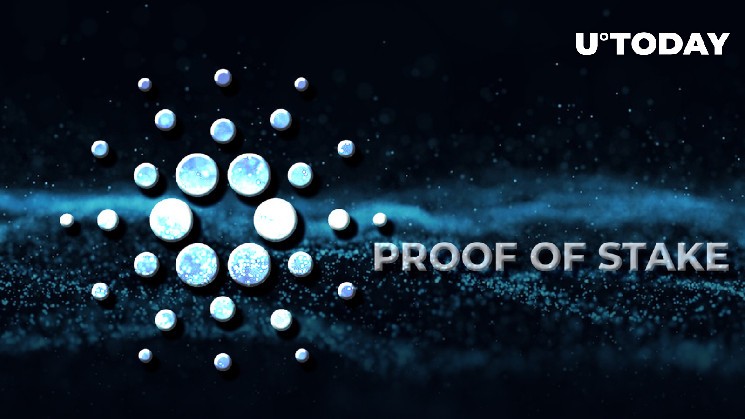Cardano Outperforms Current Proof-of-stake Chains: Report

A recent report takes a look at proof-of-stake chains: Cardano, Polkadot and Avalanche. The proof-of-stake consensus mechanism powers blockchains such as Cardano, Tezos, Polkadot and Avalanche and allows staking and the creation of validator nodes.
VCs and most of the crypto Twitter try their best not to talk about #Cardano
But if you look at the raw metrics,#Cardano is way ahead of other PoS chains
If you are curious to know more,
Subscribe to our newsletter to get smarter & save your time?https://t.co/tqv4EHMUeY pic.twitter.com/V8WhpWMckV
— Sooraj ? (@Soorajksaju2) September 10, 2022
Currently, Cardano has over 1,182,080 staked wallets with a staking ratio of 72.63%, which reflects a high degree of decentralization. Polkadot, on the other hand, has over 33,646 staked wallets (called Nominators) with a staking ratio of 52.4%, which reflects a relatively low level of decentralization.
Avalanche has 22,890 individual staked wallets and a staking ratio of 64.9%, which is relatively higher compared to Polkadot’s 52.4%. Compared to Polkadot, Avalanche has a high staking ratio despite having a small number of staked wallets.
With a total of 998 validators, Polkadot has a small number of validators when compared to Cardano, which has over 3,202 stake pools/validator nodes. Polkadot validator nodes can be run by anyone, but there is a limit of 297 validators per era/epoch that can participate in the 24-hour validation.
Blockchain trilemma stands uncracked
Public blockchains have been around for a while, yet none of them has been able to crack the puzzle of the blockchain trilemma so far. The blockchain trilemma refers to the problem in which a public blockchain will not be able to optimize for all three qualities: security, scalability and decentralization.
Cardano’s network is highly distributed and decentralized, which reduces its vulnerability to DDoS attacks. The comparatively small size of the Cardano full node and the low hardware requirements support its decentralization, which is reflected in the large number of stake pools and users running full nodes.
Although the Cardano network exhibits a high level of security and decentralization, it falls short on the scalability benchmarks. At the beginning of 2022, Cardano listed 11 ways it intended to scale. The majority of these improvements are anticipated to be included in the upcoming Vasil update on Sept. 22.







 Bitcoin
Bitcoin  Ethereum
Ethereum  Tether
Tether  USDC
USDC  Dogecoin
Dogecoin  Cardano
Cardano  TRON
TRON  Bitcoin Cash
Bitcoin Cash  Chainlink
Chainlink  Polygon
Polygon  Litecoin
Litecoin  LEO Token
LEO Token  Dai
Dai  Hedera
Hedera  Ethereum Classic
Ethereum Classic  Stacks
Stacks  Cronos
Cronos  Stellar
Stellar  Cosmos Hub
Cosmos Hub  OKB
OKB  Maker
Maker  Theta Network
Theta Network  Monero
Monero  Algorand
Algorand  NEO
NEO  Gate
Gate  Tezos
Tezos  KuCoin
KuCoin  Synthetix Network
Synthetix Network  EOS
EOS  IOTA
IOTA  Bitcoin Gold
Bitcoin Gold  Tether Gold
Tether Gold  TrueUSD
TrueUSD  Enjin Coin
Enjin Coin  Zilliqa
Zilliqa  Holo
Holo  Ravencoin
Ravencoin  0x Protocol
0x Protocol  Siacoin
Siacoin  Qtum
Qtum  Basic Attention
Basic Attention  Dash
Dash  Ontology
Ontology  Zcash
Zcash  Decred
Decred  NEM
NEM  Lisk
Lisk  Waves
Waves  DigiByte
DigiByte  Numeraire
Numeraire  Status
Status  Nano
Nano  Hive
Hive  Pax Dollar
Pax Dollar  Steem
Steem  Huobi
Huobi  OMG Network
OMG Network  BUSD
BUSD  Ren
Ren  Bytom
Bytom  Bitcoin Diamond
Bitcoin Diamond  HUSD
HUSD  Kyber Network Crystal Legacy
Kyber Network Crystal Legacy  Energi
Energi  Augur
Augur